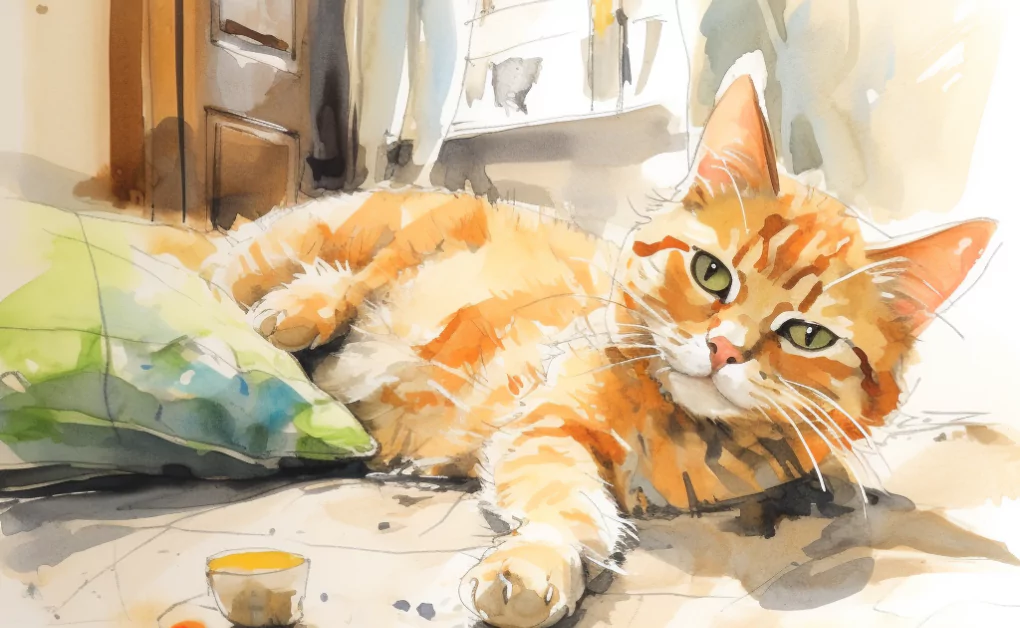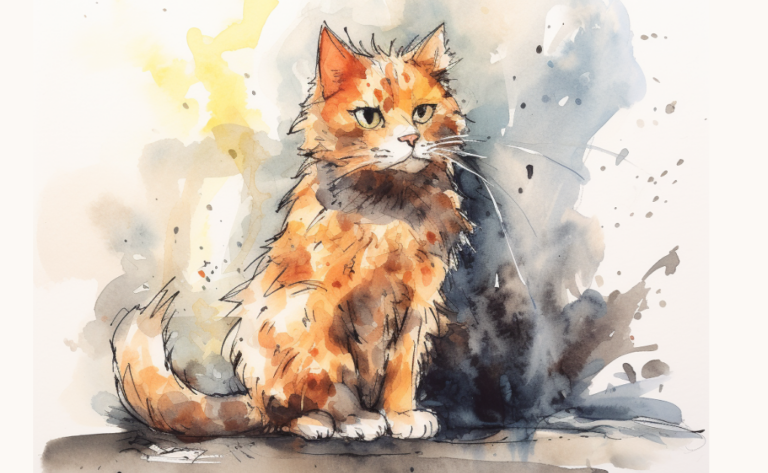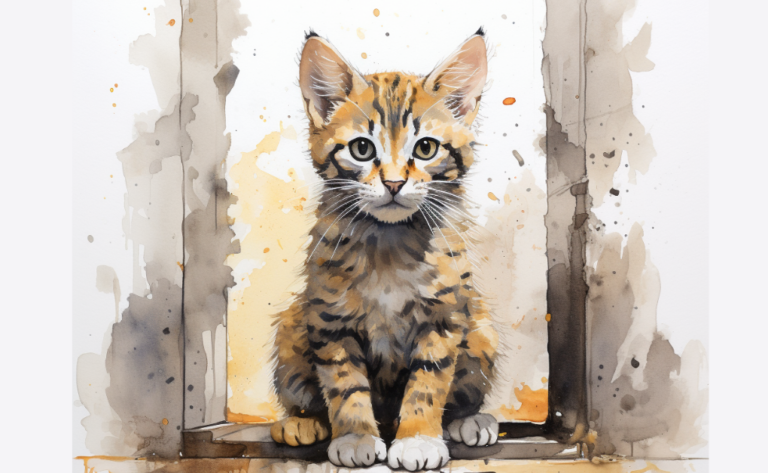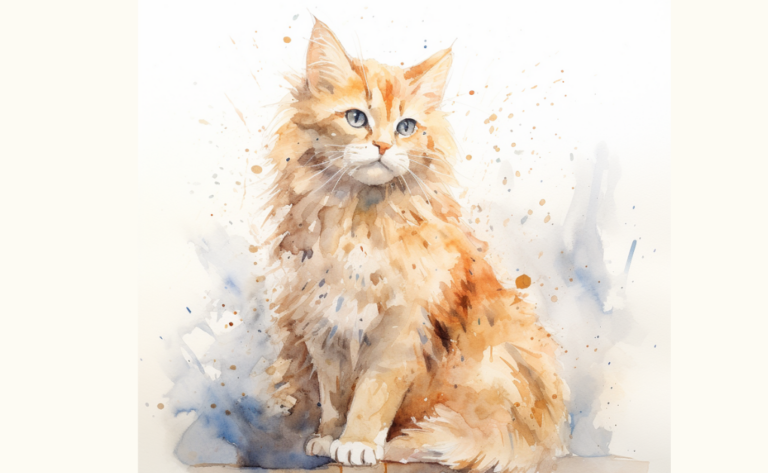What is Feline Leukemia Virus (FeLV)?
What is it?
How is it Treated?
Breed Predispositions
No specific cat breeds are predisposed to feline leukemia virus (FeLV) infection. However, cats allowed to roam freely and have close contact with other cats, such as in multi-cat households, are at a higher risk of disease.
Introduction
Samantha had always been vigilant about her cat, Bella’s, health, ensuring she received regular check-ups and vaccinations. However, one day she noticed Bella was unusually lethargic, had lost weight, and was no longer grooming herself as she usually would. Concerned, Samantha took Bella to the veterinarian for a thorough examination. The diagnosis came as a devastating shock: Bella had leukemia.
Leukemia in cats is a form of cancer that predominantly targets the blood cells, particularly the white blood cells. This condition arises due to certain biological processes within the feline body that result in unregulated growth and proliferation of abnormal white blood cells.
The specific cells can classify leukemia into various types, such as lymphocytic or myelocytic leukemia. Leukemia interferes with the standard functioning of the immune system and can cause a systemic impact on the cat’s overall health. According to the American Association of Feline Practitioners, the feline leukemia virus (FeLV) is second in causing death in cats, just after trauma. It kills most persistently infected cats within three years of diagnosis.
Cat owners must understand the onset of leukemia to detect the condition early and seek immediate veterinary attention. Managing leukemia involves addressing the overproduction of abnormal white blood cells and bolstering the cat’s overall well-being. Timely intervention and ongoing care play a vital role in enhancing the quality of life of a FeLV-positive cat and managing the effects of leukemia.
Importantly, FeLV cannot be transmitted to humans, but the virus in the blood may infect new cats or adult cats in the same household. Therefore, it’s essential to understand whether your cat has been exposed to FeLV to ensure appropriate precautions and treatments.
How Feline is Leukemia Virus Transmitted?
Feline Leukemia Virus (FeLV), a highly contagious disease among cats, primarily spreads through close, direct interaction with a FeLV-infected cat. Infected cats harbor the virus in their saliva, nasal secretions, urine, feces, and milk.
Here are the main transmission modes of FeLV:
- Mutual Grooming: Cats frequently engage in mutual grooming as a social interaction. An infected cat might pass the virus to a non-infected cat through saliva during this activity.
- Bite Wounds: FeLV can also be transmitted when a cat receives a bite wound from an infected cat. This transmission method puts outdoor cats, who are more likely to engage in fights, at an increased risk of FeLV infection.
- Shared Resources: Sharing food and water dishes with an infected cat can transmit the virus. Likewise, shared litter boxes can result in virus transmission between cats.
- Mother to Kittens: Kittens can contract the virus from their infected mother before birth or during nursing.
- Close, Prolonged Contact: The virus can spread through any close, extended interaction between an infected cat and a non-infected one.
- Bite Wounds: FeLV can also be transmitted when a cat receives a bite wound from an infected cat. This transmission method puts outdoor cats, who are more likely to engage in fights, at an increased risk of FeLV infection.
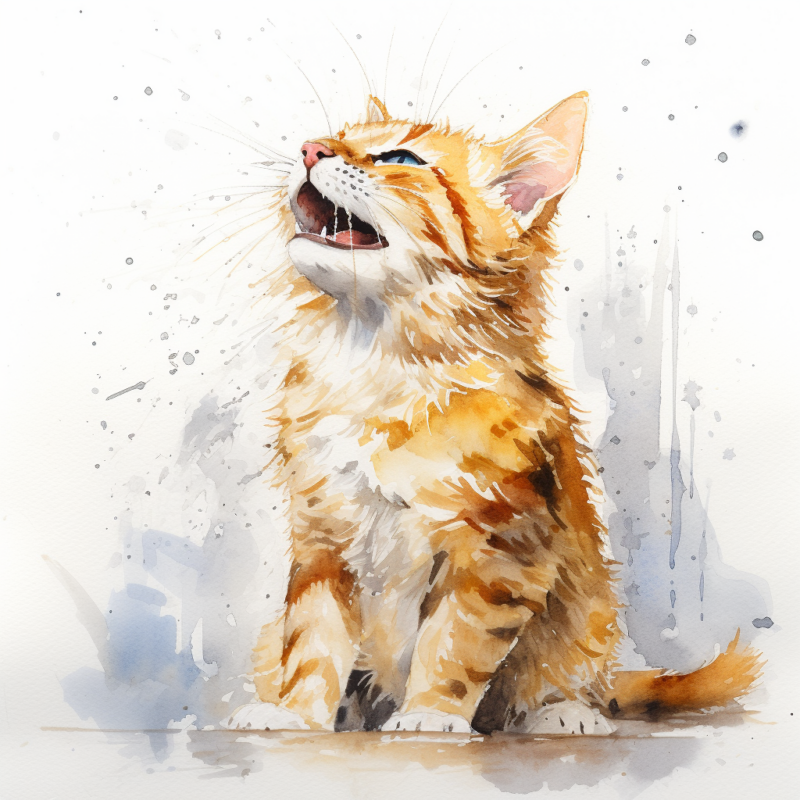
FeLV isn’t a full virus outside a cat’s body, meaning it doesn’t survive well in the environment. Typically, the virus dies within a few hours in a dry setting, making indirect transmission (such as via clothing or furniture) less concerning than direct contact between cats. Nevertheless, exposure to FeLV doesn’t automatically imply that a cat will die from it. However, most cats exposed to FeLV will eventually succumb to the disease without treatment, most cats exposed to FeLV will eventually succumb to the disease.
Furthermore, only some encounters with the virus lead to infection. While some cats can successfully combat and eliminate the virus from their bodies, others may develop a progressive FeLV infection. Whether a cat is susceptible to the virus can depend on its age, overall health, immune status, and whether it’s an indoor or outdoor cat. Consequently, some cats can test positive for FeLV, indicating they’ve been infected with the virus.
Causes of Cat Leukemia
Feline Leukemia Virus (FeLV) is a major cause of certain cat cancers, including lymphoma and leukemia. FeLV is not the same as human leukemia; it’s a retrovirus that can lead to various health issues in cats, including anemia, immune system suppression, and various forms of cancer.
Let’s explore in detail the primary route through which cats get infected with FeLV:
Direct Contact with an Infected Cat
FeLV is primarily spread from cat to cat through close social contact. Here are the main ways this happens:
- Saliva: The virus is present in high amounts in the saliva of infected cats. Grooming behaviors, such as mutual licking, are commonly transmitted by the virus.
- Bite Wounds: The virus can be spread through bite wounds, often when a healthy catfights with an infected cat.
- Nose-to-Nose Contact: Direct nose-to-nose contact can also transmit the virus.
- Shared Litter Boxes and Feeding Dishes: FeLV can theoretically be spread through shared litter boxes or feeding dishes, but this is less common as the virus only lives for a short time outside of the body.
Vertical Transmission (Mother to Kitten)
Infected mother cats can pass on the virus to their kittens during pregnancy or through nursing after birth. This is a significant route of infection for kittens born to infected mothers.
Blood Transfusion
Though rare, transmission can also occur through a transfusion of infected blood.
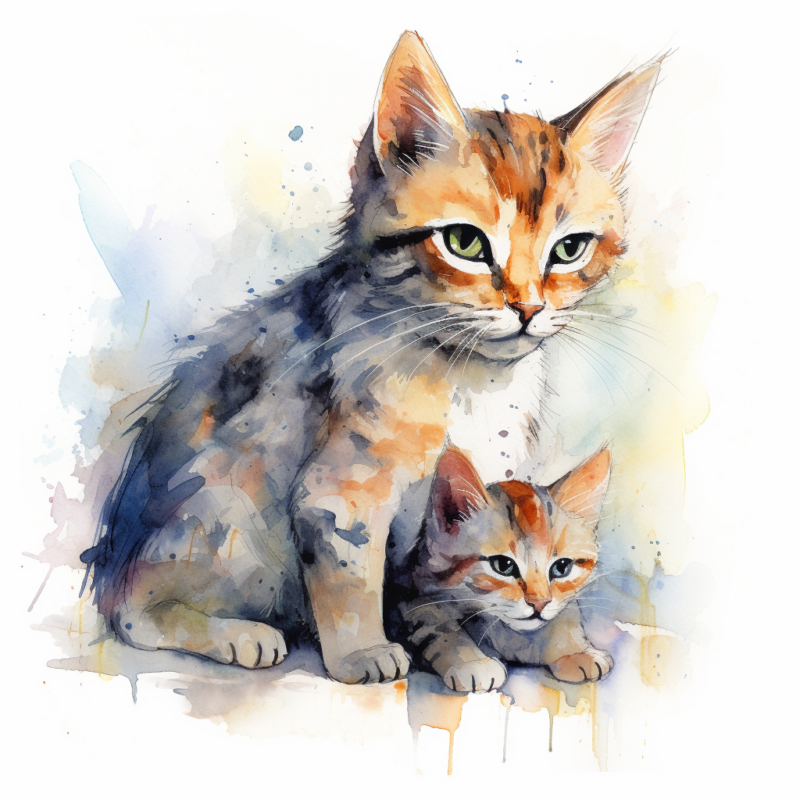
However, it’s important to note that not all cats exposed to FeLV will become persistently infected. Some cats can resist or fight off the infection on their own. Others may become “latent carriers,” remaining healthy but able to spread the virus to other cats.
Vaccination against FeLV is available and can provide significant protection against the virus, although it is not 100% effective. Regular testing, particularly for cats at high risk, can help identify infected cats so they can receive appropriate care and prevent the spread of the virus to other cats. Cats at high risk include kittens, cats living with infected cats, and cats allowed outdoors or with unknown exposure histories.
What Disease Does the FeLV Cause?
Feline Leukemia Virus (FeLV) is a retrovirus that can lead to various cat diseases and health problems. Here are the primary conditions that can arise from FeLV infection:
- Immunosuppression: One of the most significant effects of FeLV is that it can weaken a cat’s immune system, making them more susceptible to other infections and diseases, both viral and bacterial.
- Anemia: FeLV can cause different types of anemia, a condition where the cat doesn’t have enough red blood cells to carry oxygen to the rest of the body. This can lead to weakness, lethargy, pale gums, and a decreased appetite.
- Cancers and Leukemia: FeLV is a leading cause of cancer in cats. It can cause lymphoma, a cancer of the lymphocytes (white blood cells). It can also cause leukemia, a bone marrow cancer that leads to an overproduction of white blood cells.
- Reproductive Issues: In female cats, FeLV can lead to reproductive problems like infertility and abortion. Kittens born to infected mothers may have developmental issues.
- Gastrointestinal Disease: Some cats with FeLV may develop gastrointestinal conditions like diarrhea and chronic weight loss.
- Neurological Disorders: In some cases, FeLV can cause neurological problems, ranging from changes in behavior and seizures to difficulties with movement.
- Respiratory Infections: Due to the immunosuppression caused by FeLV, affected cats may be more prone to respiratory infections.
Remember, not all cats exposed to FeLV will develop these diseases. Some cats can eliminate the virus from their bodies and remain healthy, while others may become infected but not show signs of disease for many years. Regular veterinary check-ups and testing can help manage and monitor cats exposed to or infected with FeLV.
Feline Leukemia Symptoms
Cats that become infected with the Feline Leukemia Virus (FeLV) may not exhibit symptoms of illness for an extended period post-infection. When symptoms surface, their range can vary, depending on the virus’s impact on different body parts or systems. These symptoms can also mirror those of other diseases. Here are some potential signs that an adult cat may have contracted FeLV:
- Diminished appetite
- Gradual weight loss progressing to severe wasting as the disease advances
- Deteriorating coat condition
- Swollen lymph nodes
- Consistent fever
- Pale gums and other mucus membranes
- Gum inflammation (gingivitis) and mouth inflammation (stomatitis)
- Skin, urinary bladder, and upper respiratory tract infections
- Constant diarrhea
- Seizures, behavioral shifts, and other neurological disorders
- A variety of eye conditions
- In unspayed female cats, kitten abortion or other reproductive complications
FeLV diagnosis can’t be determined solely based on symptoms, even with these symptoms present, since many of these signs can be attributed to other medical conditions. A diagnosis of FeLV is typically confirmed via a blood test performed by a vet, which identifies infected cells and changes in the white blood cell count. If your cat shows signs of illness and FeLV is a concern, scheduling a veterinary visit promptly is crucial.
For cats that go outdoors, live with other cats, or are otherwise at risk for FeLV, testing your cat might be advisable even if no signs of illness are apparent. Remember that FeLV, a leading cause of death in many cats and can cause severe disease, is highly preventable through vaccination and proper care to minimize exposure to FeLV-infected cats. It’s also important to note that some cats can clear the virus from their system, while others may become persistently infected.
Diagnosis of Leukemia in Cats
The process of diagnosing Feline Leukemia Virus (FeLV) typically encompasses the following stages:
Initial Clinical Assessment
The diagnosis begins with a comprehensive physical evaluation of the cat, along with a detailed review of its medical history. The veterinarian will look for any FeLV indications, such as appetite loss, weight reduction, deteriorating coat condition, swollen lymph nodes, continuous fever, and pale gums. However, these symptoms alone aren’t enough to confirm FeLV, as they can also be signs of other health conditions.
FeLV-Specific Testing
The vet will conduct a blood test to ascertain a diagnosis. There are two preliminary blood tests typically used to detect FeLV:
- ELISA (enzyme-linked immunosorbent assay): This test can be carried out right in the vet’s office and is designed to detect FeLV antigens (virus-related proteins) in the cat’s blood. The ELISA test can identify both primary and secondary viremia (the presence of the FeLV virus in the bloodstream), making it a useful initial screening tool.
- IFA (indirect immunofluorescent antibody assay): This test, often sent to an external lab, detects FeLV antigens in the cat’s white blood cells or platelets. A positive IFA result generally signifies a progressive infection, which is likely to be lifelong.
Follow-Up Testing
Should a cat test positive for FeLV via the initial ELISA test, a re-test after a few weeks or months is generally advised? This is because some cats’ immune systems can combat and clear the virus from their systems, resulting in a negative outcome upon re-testing, indicating a regressive infection.
For cats that test positive for FeLV on both the ELISA and IFA tests, additional tests might be recommended to evaluate the cat’s overall health and pinpoint any secondary infections or conditions connected to the FeLV infection. This might involve a complete blood count, a chemistry panel, urinalysis, and specific tests for secondary illnesses.
While it’s crucial to understand that FeLV can lead to significant health issues, many cats that test positive for FeLV can still enjoy a good quality of life with appropriate care and monitoring. Regular vet check-ups, a well-balanced diet, keeping the cat indoors to prevent FeLV spread, and prompt treatment of secondary conditions are all essential components of managing FeLV. Therefore, all cats should be tested, especially those at risk or showing symptoms.
Treatment for Leukemia in Felines
Although there’s no definitive cure for Feline Leukemia Virus (FeLV), this doesn’t imply that FeLV-positive cats can’t receive restorative care. The primary aim in managing FeLV-positive cats is to preserve their health, prevent and manage secondary infections, and ensure they enjoy a high quality of life for as long as possible.
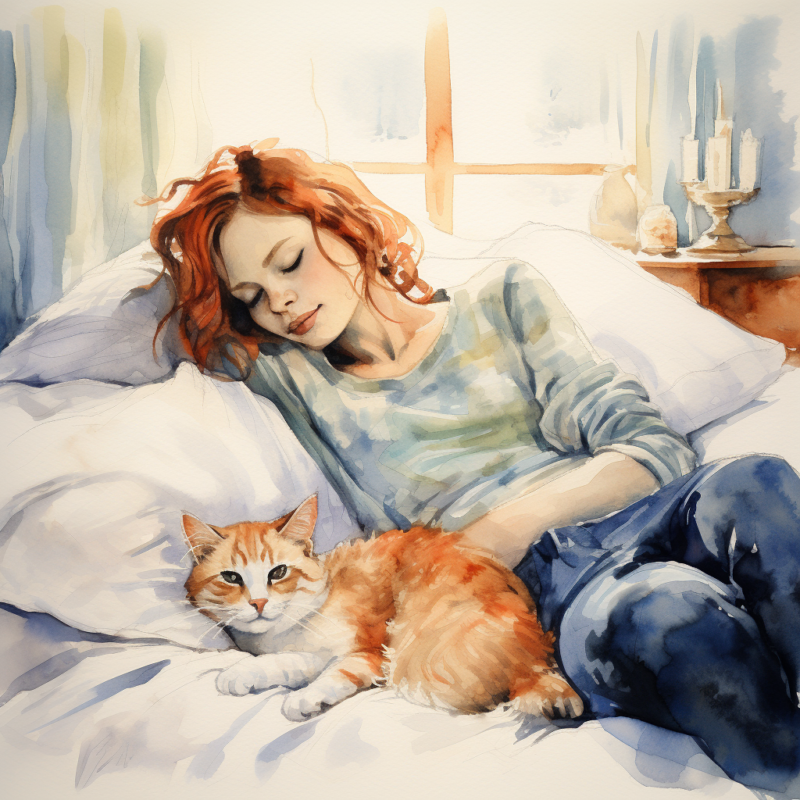
Essential Supportive Care
Providing supportive care is an integral part of the treatment plan for cats with FeLV. This encompasses offering a well-balanced diet, a constant supply of fresh water, a peaceful and comfortable environment, and reducing stress to the maximum extent possible. Regular veterinary check-ups are also pivotal to closely monitoring the affected cat’s health.
Handling Secondary Health Issues
Cats with FeLV are more prone to secondary infections and other health complications due to compromised immune systems. These problems can manifest as dental disease, respiratory infections, skin infections, etc.
Your veterinarian will address these issues as they emerge, which might involve administering antibiotics, anti-inflammatory drugs, and other necessary treatments.
Antiviral Treatments
Although it doesn’t provide a cure, antiviral therapy can help manage a FeLV infection. In some cases, the antiviral AZT (zidovudine) has been used to control symptoms associated with FeLV. However, AZT can lead to serious side effects and necessitates close monitoring by a vet. The effectiveness of other antiviral therapies in cats is still under research and examination.
Use of Immune Modulators
Certain drugs, known as immune modulators, can be employed to fortify the cat’s immune system. One such treatment is Lymphocyte T-Cell Immunomodulator (LTCI). It’s an injectable protein that can help strengthen the immune system in FeLV-positive cats.
Prevention of FeLV Transmission
FeLV can be transmitted to other cats. If your cat is FeLV-positive, preventing the virus from spreading is of utmost importance. This implies keeping your FeLV-positive cat indoors and avoiding its direct interaction with other cats. All households with multiple cats should be tested for FeLV, and uninfected cats should receive the FeLV vaccination.
Palliative Care
If FeLV has resulted in cancer, palliative care can be provided to help manage symptoms and maintain the cat’s quality of life. This might include pain management, nutritional support, and other treatments, such as a blood transfusion to make the cat comfortable.
Looking after a cat with FeLV can be demanding, but many FeLV-positive cats can lead satisfying lives with the right care and management. Regular veterinary care is the cornerstone of managing FeLV and associated conditions, including a possible FIV infection.
How to Prevent Feline Leukemia Virus Infections?
While it’s not always possible to prevent lymphoma, as the disease often arises from factors beyond an owner’s control, like genetics or random cellular changes, you can take certain measures to mitigate your cat’s risk of developing this disease.
- Vaccination and Consistent Testing: By vaccinating your cat against Feline Leukemia Virus (FeLV) and maintaining regular testing for FeLV and Feline Immunodeficiency Virus (FIV), you can help guard against these viruses known to raise lymphoma risk.
- Indoor Lifestyle: Ensuring your cat stays indoors can curtail exposure to FeLV, FIV, and other outdoor pathogens. Indoor cats also generally have lower incidences of injuries and exposure to harmful elements.
- Steer Clear of Tobacco Smoke: Exposure to secondhand smoke has been linked with a heightened risk of lymphoma in cats. If you smoke, avoid doing so around your cat, or consider giving it up. Aim to limit your cat’s contact with other environmental carcinogens as well.
- Offer a Nutritious Diet: A balanced, nutrient-rich diet can bolster your cat’s overall health and immune function. While no specific diet can avert cancer, proper nutrition can keep your cat’s body functioning at its best.
- Frequent Vet Check-ups: Regular check-ups with the vet can facilitate early detection of lymphoma or other health concerns when treatment is likely more effective. Your vet can offer tailored advice based on your cat’s needs and risk factors, ensuring critical care for your pet.
- Control Chronic Inflammation: If your cat suffers from a condition leading to chronic inflammation, like inflammatory bowel disease, work closely with your vet to manage the condition effectively. Unregulated chronic inflammation could elevate the risk of lymphoma.
It’s important to remember that while these strategies can reduce the risk, they cannot eliminate the possibility of lymphoma. Cancer remains one of the most prevalent in cats. Cats that achieve early detection and treatment have a better prognosis, regardless of the type of lymphoma diagnosed. Always consult your vet if you observe changes in your senior cat’s health or behavior.
Frequently Asked Questions
Disclaimer: The information provided on this veterinary website is intended for general educational purposes only and should not be considered as a substitute for professional veterinary advice, diagnosis, or treatment. Always consult a licensed veterinarian for any concerns or questions regarding the health and well-being of your pet. This website does not claim to cover every possible situation or provide exhaustive knowledge on the subjects presented. The owners and contributors of this website are not responsible for any harm or loss that may result from the use or misuse of the information provided herein.

